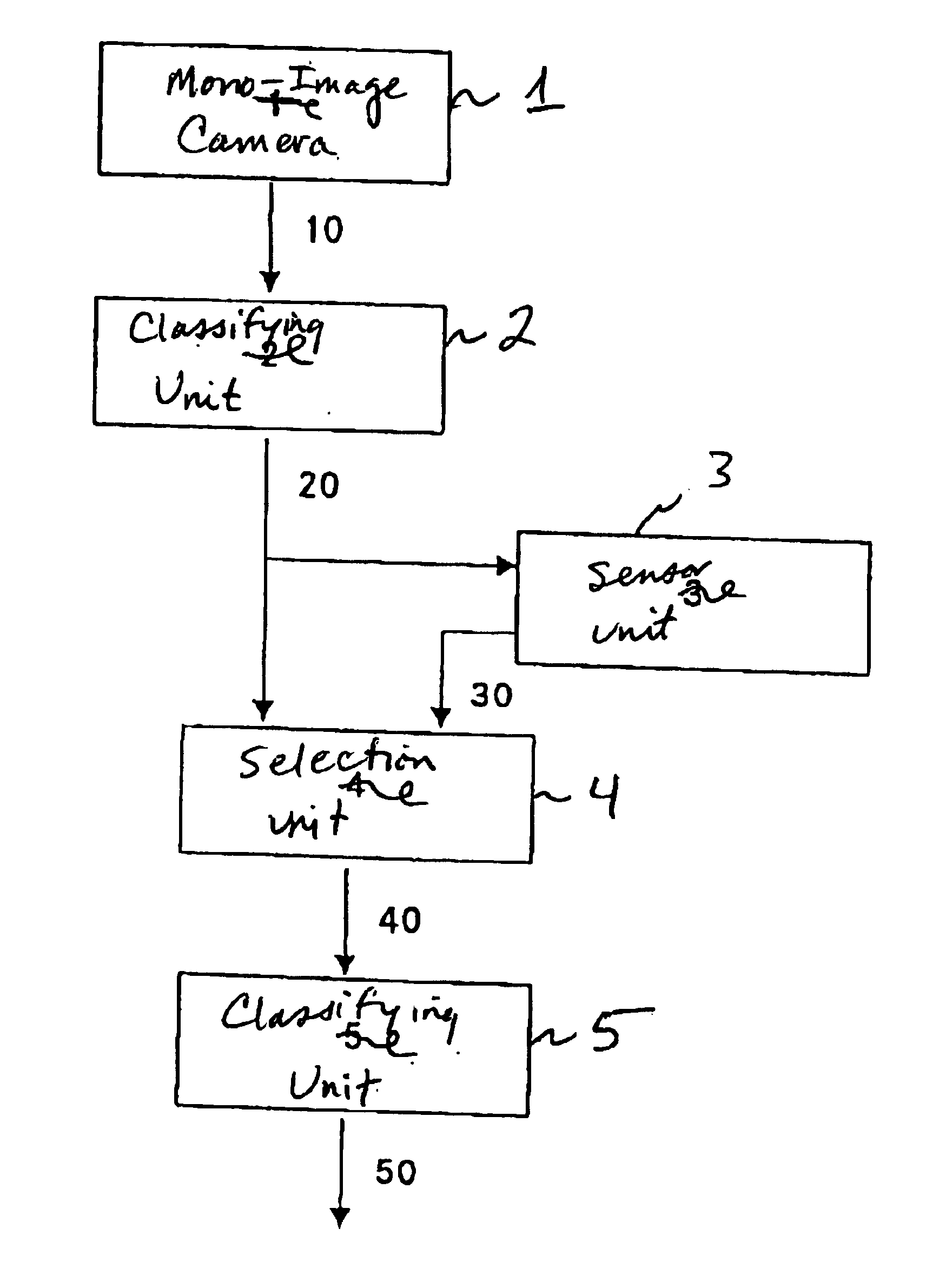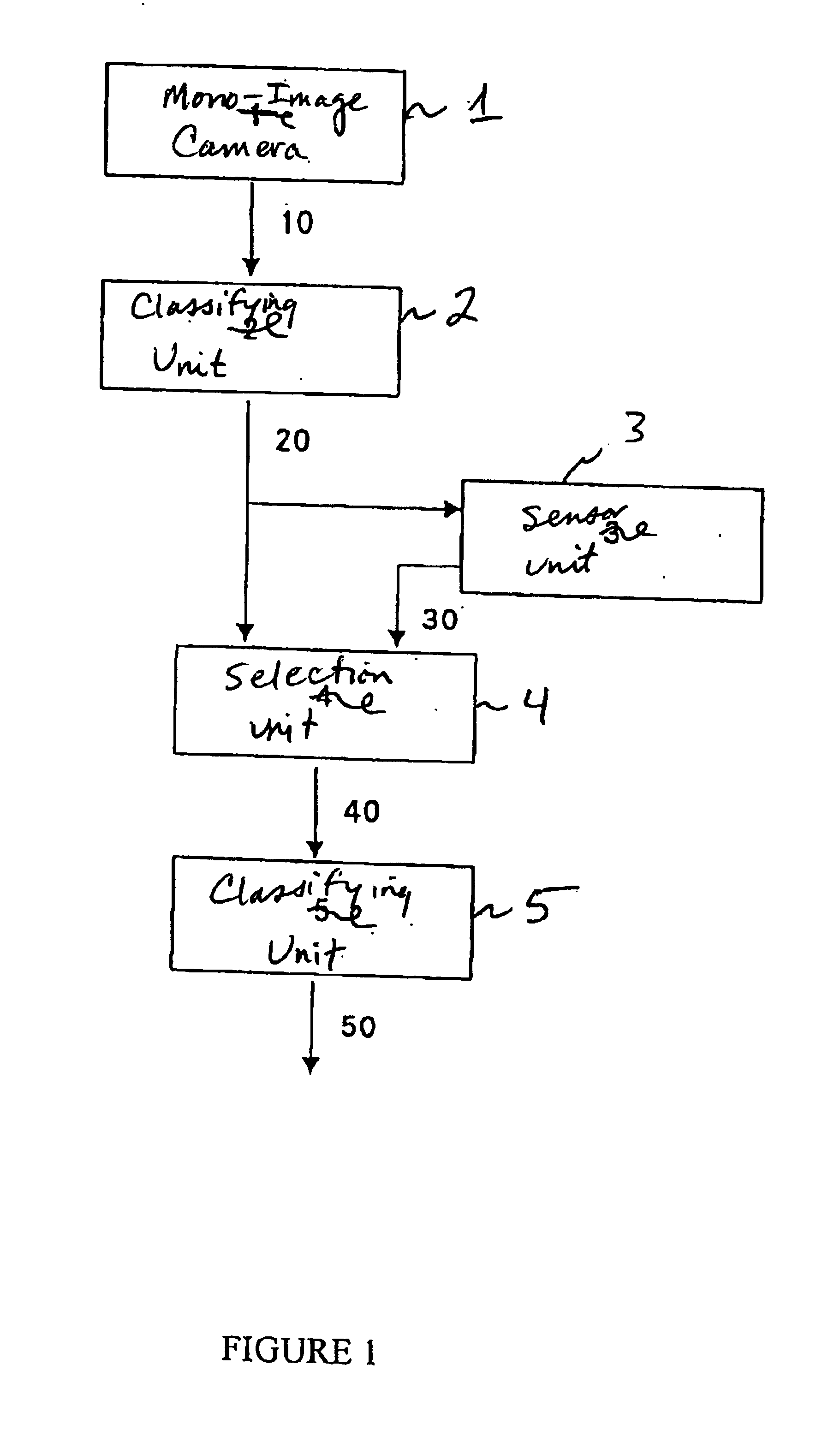Camera-based precrash detection system
a detection system and camera technology, applied in the field of camera-based precrash detection system, can solve the problems of limited range, inability to identify the other party, inability to reliably detect non-metallic objects (e.g., people or trees),
- Summary
- Abstract
- Description
- Claims
- Application Information
AI Technical Summary
Benefits of technology
Problems solved by technology
Method used
Image
Examples
Embodiment Construction
FIG. 1 schematically depicts one advantageous refinement of such a device for implementing the method of the present invention. Here, mono-image camera 1 makes image data 10 available to a classifying unit 2, which identifies image regions containing the road users or obstacles and informs distance-measuring sensor unit 3 of the corresponding positional data. Sensor unit 3 then measures these regions with respect to their distance from the observer. In so doing, these measuring data 30, together with data 20 from first classifying unit 2, are available to a selection unit 4. Selection unit 4 can control the data flow to the downstream unit for classifying selected road users or obstacles 5 by type. Image data 40 selected by the selection unit are transmitted to classifying unit 5 for classification. Results 50 of this type classification are advantageously made available to a risk calculator connected to the classifying unit, so that the risk calculator can decide whether to initiat...
PUM
 Login to View More
Login to View More Abstract
Description
Claims
Application Information
 Login to View More
Login to View More - R&D
- Intellectual Property
- Life Sciences
- Materials
- Tech Scout
- Unparalleled Data Quality
- Higher Quality Content
- 60% Fewer Hallucinations
Browse by: Latest US Patents, China's latest patents, Technical Efficacy Thesaurus, Application Domain, Technology Topic, Popular Technical Reports.
© 2025 PatSnap. All rights reserved.Legal|Privacy policy|Modern Slavery Act Transparency Statement|Sitemap|About US| Contact US: help@patsnap.com


